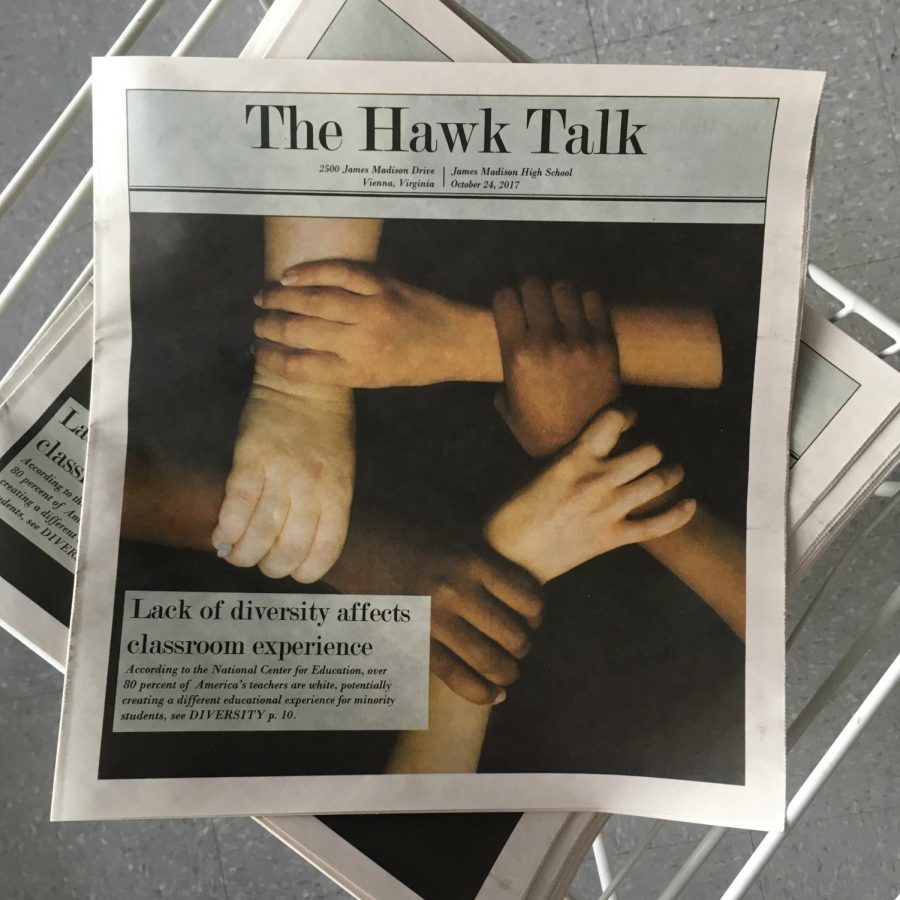Focus on what diversity Madison does have, eliminate lack of understanding between races
Philana Quan (’18) explains the flip side of the In-Depth article from the October Cycle.
November 13, 2017
To the Editors (but really everyone):
The Snapchat story in response to October 2017’s in-depth article entitled “fake news” was wholly unnecessary. Flipping through that story I could tell very few of those people actually read the article. I was not a fan of how the article was framed either but not for the same reasons. I understand it addresses the socio-economics that perpetuate why Madison has the demographics it does — fantastic information. However, the article made it sound like the lack of diversity was very easy to remedy that by simply hiring a more diverse staff. I could see the direction the article intended to go in which was to fix our lack of racial diversity, but it never got to its destination. It was not clear if the focus was to be on teacher or student diversity due to the misleading infographics. The socio-economics, regarding student diversity, of this area are out of our control. And since the majority of the article talked about it, the ended with an incomplete feeling.
What captured a lot of people’s attention was the pie chart. It is one of the reasons people got mad because it gave the article an air of “whites are bad”and “white culture is no culture.” Regardless of whether or not that was the message of the article, neither of those statements are true. I concede. White culture does not mean no culture, but it’s not white culture that people have a problem with. It is that it’s seen as the only culture. It is the one that is represented most of the time, the most visible.
But the pie chart did bring up questions like: Why doesn’t The Hawk Talk have a problem with Falls Church High School for having a hispanic majority? Isn’t that a diversity problem? To those who asked those questions, you’ve missed the point. Madison isn’t racially diverse. Although it’s not a problem for you, don’t get mad that the article makes it a problem to solve. Though the article failed to explicitly state it, they are looking for diversity from the dominating white culture. The key here is that hispanics in society are marginalized and whites are not. It has to do with history and power — a topic for another time.
Personally, I don’t’ think it is necessary to be racially diverse. It’s a bonus, not a necessity. There’s is nothing an individual can do about racial diversity where they go to school. An intellectual diversity, or diversity of any other demographic, is just as important. However, I do see the problem that comes with a homogeneous population of not having a personal understanding of the experiences of other races. Also, since that demographic is missing in school, you would have to teach about them. And that’s a slippery slope to teach people about other’s experiences, because your view is skewed.
The article should’ve focused on what we do have not what we don’t. I think they wanted to increase racial diversity in the hopes that that would encourage the understanding of others. Although there is some merit to that idea, it alone will not solve what you want it to. You want to talk about race? Let’s talk about race. Celebrate the students here at Madison and learn about them. It doesn’t matter that the majority is white. The difference is that that majority needs to care about everyone else at their school. The article is looking for an external solution to solve the racial divide here in our community that mimics the one across the country. That divide is basically a lack of understanding between the races. So rather than pull from the outside, solve the issue with what you have been handed.



